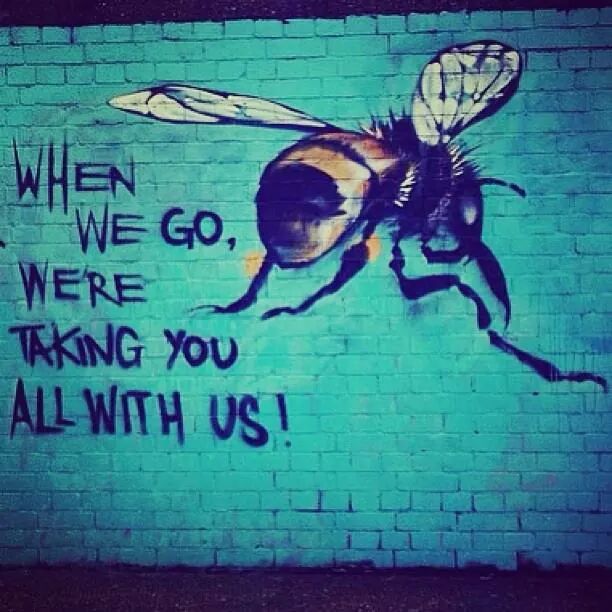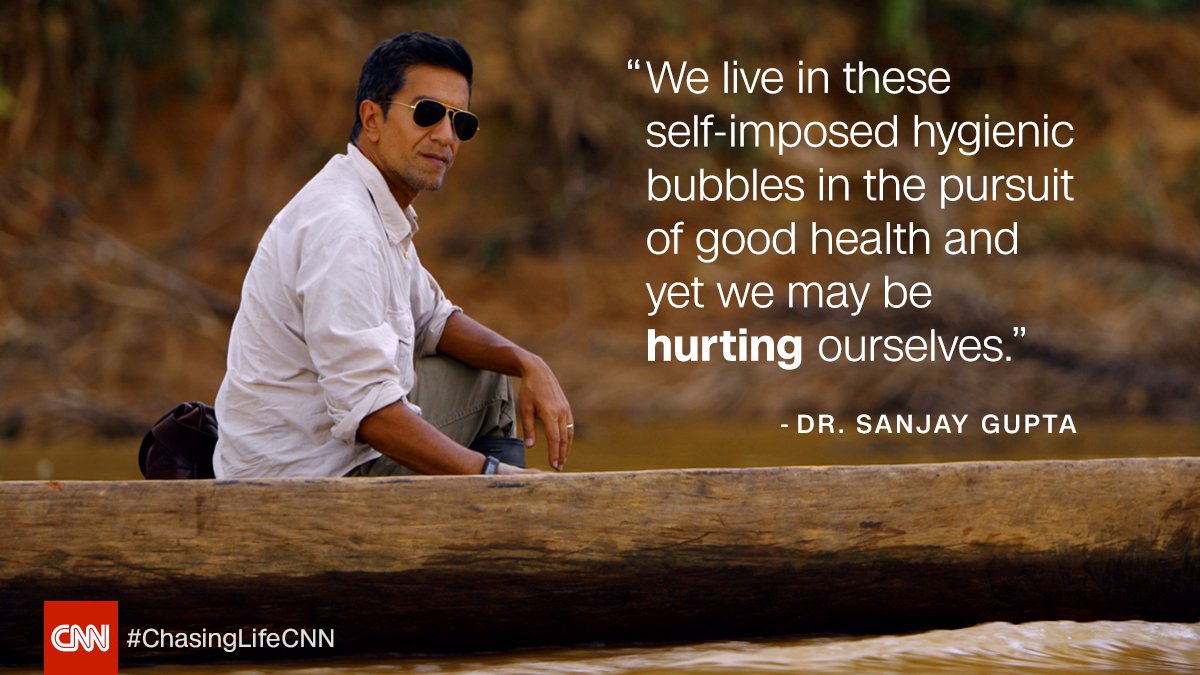
Addiction Commonality
Alcohol, Opiates, Fat and Sugar are all Addictive Substances: this blog is about that "addiction sameness".
Butter Pig Family
* A butter sculpture of a sow and her piglets
Thursday, April 18, 2019
Watch a Diving Bird Pluck a Suckerfish Off a Shark | Nat Geo Wild
Watch a Diving Bird Pluck a Suckerfish Off a Shark
Divers off Cabo San Lucas, Mexico captured the only known footage showing a bird called a cormorant pulling remoras, or suckerfish, off a whale shark.
The Neuroscience Behind Bad Decisions
The Neuroscience Behind Bad Decisions
Irrationality may be a consequence of the brain’s ravenous energy needs.

Pablo Alfieri for Quanta Magazine
Emily Singer
Former Senior Writer
August 23, 2016
BiologyEconomicsNeurosciencePodcast
Humans often make bad decisions. If you like Snickers more than Milky Way, it seems obvious which candy bar you’d pick, given a choice of the two. Traditional economic models follow this logical intuition, suggesting that people assign a value to each choice — say, Snickers: 10, Milky Way: 5 — and select the top scorer. But our decision-making system is subject to glitches.
In one recent experiment, Paul Glimcher, a neuroscientist at New York University, and collaborators asked people to choose among a variety of candy bars, including their favorite — say, a Snickers. If offered a Snickers, a Milky Way and an Almond Joy, participants would always choose the Snickers. But if they were offered 20 candy bars, including a Snickers, the choice became less clear. They would sometimes pick something other than the Snickers, even though it was still their favorite. When Glimcher would remove all the choices except the Snickers and the selected candy, participants would wonder why they hadn’t chosen their favorite.
Economists have spent more than 50 years cataloging irrational choices like these. Nobel Prizes have been earned; millions of copies of Freakonomics have been sold. But economists still aren’t sure why they happen. “There had been a real cottage industry in how to explain them and lots of attempts to make them go away,” said Eric Johnson, a psychologist and co-director of the Center for Decision Sciences at Columbia University. But none of the half-dozen or so explanations are clear winners, he said.
In the last 15 to 20 years, neuroscientists have begun to peer directly into the brain in search of answers. “Knowing something about how information is represented in the brain and the computational principles of the brain helps you understand why people make decisions how they do,” said Angela Yu, a theoretical neuroscientist at the University of California, San Diego.
Glimcher is using both the brain and behavior to try to explain our irrationality. He has combined results from studies like the candy bar experiment with neuroscience data — measurements of electrical activity in the brains of animals as they make decisions — to develop a theory of how we make decisions and why that can lead to mistakes. combined results from studies like the candy bar experiment with neuroscience data — measurements of electrical activity in the brains of animals as they make decisions — to develop a theory of how
Glimcher has been one of the driving forces in the still young field of neuroeconomics. His theory merges far-reaching research in brain activity, neuronal networks, fMRI and human behavior. “He’s famous for arguing that neuroscience and economics should be brought together,” said Nathaniel Daw, a neuroscientist at Princeton University. One of Glimcher’s most important contributions, Daw said, has been figuring out how to quantify abstract notions such as value and study them in the lab.
In a new working paper, Glimcher and his co-authors — Kenway Louie, also of NYU, and Ryan Webb of the University of Toronto — argue that their neuroscience-based model outperforms standard economic theory at explaining how people behave when faced with lots of choices. “The neural model, described in biology and tested in neurons, works well to describe something economists couldn’t explain,” Glimcher said.
At the core of the model lies the brain’s insatiable appetite. The brain is the most metabolically expensive tissue in the body. It consumes 20 percent of our energy despite taking up only 2 to 3 percent of our mass. Because neurons are so energy-hungry, the brain is a battleground where precision and efficiency are opponents. Glimcher argues that the costs of boosting our decision-making precision outweigh the benefits. Thus we’re left to be confounded by the choices of the modern American cereal aisle.
Glimcher’s proposal has attracted interest from both economists and neuroscientists, but not everyone is sold. “I think it’s exciting but at this point remains a hypothesis,” said Camillo Padoa-Schioppa, a neuroscientist at Washington University in St. Louis. Neuroeconomics is still a young field; scientists don’t even agree on what part of the brain makes decisions, let alone how.
So far, Glimcher has shown that his theory works under specific conditions, like those of the candy bar experiment. He aims to expand that range, searching for other Freakonomics-esque mistakes and using them to test his model. “We are aiming for a grand unified theory of choice,” he said.

Courtesy of Paul Glimcher
Paul Glimcher, a neuroscientist at NYU, has developed a model for how we make economic decisions and why we sometimes make poor ones. He’s shown here with a device that tracks eye movement, which scientists use to study decision-making in animals.
Paul Glimcher, a neuroscientist at NYU, has developed a model for how we make economic
Humans often make bad decisions. If you like Snickers more than Milky Way, it seems obvious which candy bar you’d pick, given a choice of the two. Traditional economic models follow this logical intuition, suggesting that people assign a value to each choice — say, Snickers: 10, Milky Way: 5 — and select the top scorer. But our decision-making system is subject to glitches.
In one recent experiment, Paul Glimcher, a neuroscientist at New York University, and collaborators asked people to choose among a variety of candy bars, including their favorite — say, a Snickers. If offered a Snickers, a Milky Way and an Almond Joy, participants would always choose the Snickers. But if they were offered 20 candy bars, including a Snickers, the choice became less clear. They would sometimes pick something other than the Snickers, even though it was still their favorite. When Glimcher would remove all the choices except the Snickers and the selected candy, participants would wonder why they hadn’t chosen their favorite.
Economists have spent more than 50 years cataloging irrational choices like these. Nobel Prizes have been earned; millions of copies of Freakonomics have been sold. But economists still aren’t sure why they happen. “There had been a real cottage industry in how to explain them and lots of attempts to make them go away,” said Eric Johnson, a psychologist and co-director of the Center for Decision Sciences at Columbia University. But none of the half-dozen or so explanations are clear winners, he said.
In the last 15 to 20 years, neuroscientists have begun to peer directly into the brain in search of answers. “Knowing something about how information is represented in the brain and the computational principles of the brain helps you understand why people make decisions how they do,” said Angela Yu, a theoretical neuroscientist at the University of California, San Diego.
Glimcher is using both the brain and behavior to try to explain our irrationality. He has combined results from studies like the candy bar experiment with neuroscience data — measurements of electrical activity in the brains of animals as they make decisions — to develop a theory of how we make decisions and why that can lead to mistakes. combined results from studies like the candy bar experiment with neuroscience data — measurements of electrical activity in the brains of animals as they make decisions — to develop a theory of how
Glimcher has been one of the driving forces in the still young field of neuroeconomics. His theory merges far-reaching research in brain activity, neuronal networks, fMRI and human behavior. “He’s famous for arguing that neuroscience and economics should be brought together,” said Nathaniel Daw, a neuroscientist at Princeton University. One of Glimcher’s most important contributions, Daw said, has been figuring out how to quantify abstract notions such as value and study them in the lab.
In a new working paper, Glimcher and his co-authors — Kenway Louie, also of NYU, and Ryan Webb of the University of Toronto — argue that their neuroscience-based model outperforms standard economic theory at explaining how people behave when faced with lots of choices. “The neural model, described in biology and tested in neurons, works well to describe something economists couldn’t explain,” Glimcher said.
At the core of the model lies the brain’s insatiable appetite. The brain is the most metabolically expensive tissue in the body. It consumes 20 percent of our energy despite taking up only 2 to 3 percent of our mass. Because neurons are so energy-hungry, the brain is a battleground where precision and efficiency are opponents. Glimcher argues that the costs of boosting our decision-making precision outweigh the benefits. Thus we’re left to be confounded by the choices of the modern American cereal aisle.
Glimcher’s proposal has attracted interest from both economists and neuroscientists, but not everyone is sold. “I think it’s exciting but at this point remains a hypothesis,” said Camillo Padoa-Schioppa, a neuroscientist at Washington University in St. Louis. Neuroeconomics is still a young field; scientists don’t even agree on what part of the brain makes decisions, let alone how.
So far, Glimcher has shown that his theory works under specific conditions, like those of the candy bar experiment. He aims to expand that range, searching for other Freakonomics-esque mistakes and using them to test his model. “We are aiming for a grand unified theory of choice,” he said.

Courtesy of Paul Glimcher
Paul Glimcher, a neuroscientist at NYU, has developed a model for how we make economic
Divide and Conquer
The brain is a power-hungry organ; neurons are constantly sending each other information in the form of electrical pulses, known as spikes or action potentials. Just as with an electrical burst, prepping and firing these signals take a lot of energy.
In the 1960s, scientists proposed that the brain dealt with this challenge by encoding information as efficiently as possible, a model called the efficient coding hypothesis. It predicts that neurons will encode data using the fewest possible spikes, just as communication networks strive to transmit information in the fewest bits.
In the late 1990s and early 2000s, scientists showed that this principleis indeed at work in the visual system. The brain efficiently encodes the visual world by ignoring predictable information and focusing on the surprising stuff. If one part of a wall is yellow, chances are the rest is also yellow, and neurons can gloss over the details of that section. But a giant red splotch on the wall is unexpected, and neurons will pay special attention to it.
Glimcher proposes that the brain’s decision-making machinery works the same way. Imagine a simple decision-making scenario: a monkey choosing between two cups of juice. For simplicity’s sake, assume the monkey’s brain represents each choice with a single neuron. The more attractive the choice is, the faster the neuron fires. The monkey then compares neuron-firing rates to make his selection.
The first thing the experimenter does is present the monkey with an easy choice: a teaspoon of yummy juice versus an entire jug. The teaspoon neuron might fire one spike per second while the jug neuron fires 100 spikes per second. In that case, it’s easy to tell the difference between the two options; one neuron sounds like a ticking clock, the other the beating wings of a dragonfly.
The situation gets muddled when the monkey is then offered the choice between a full jug of juice and one that’s nearly full. A neuron might represent that newest offer with 80 spikes per second. It’s much more challenging for the monkey to distinguish between a neuron firing 80 spikes per second and 100 spikes per second. That’s like telling the difference between the dragonfly’s flutter and the hum of a locust.
Glimcher proposes that the brain avoids this problem by recalibrating the scale to best represent the new choice. The neuron representing the almost-full jug — now the worst of the two choices — scales down to a much lower firing rate. Once again it’s easy for the monkey to differentiate between the two choices.
Glimcher’s model, based on an earlier model known as divisive normalization, spells out the math behind this recalibration process. It proposes that neurons can send more efficient messages if they encode in their sequence of spikes only the relative differences among the choices. “Choice sets have a lot of shared information; they are not random and independent,” Glimcher said. “Normalization is sucking out redundant information so that the information coming out is as relevant as possible, wasting as little energy as possible.” He notes that engineers, who are used to working with adaptive systems, aren’t surprised by this idea. But people who study choice often are.
According to Daw, “What’s great about divisive normalization is that it takes these principles we know from vision and applies them to value in ways that make sense but are out of the box.”
The juice example above is theoretical, but Glimcher and collaborators have recorded electrical activity from monkeys’ brains as they make different kinds of choices. These studies show that decision-making neurons behave as the model predicts. If scientists increase the value of one choice, the equivalent of swapping out a so-so Milky Way with a delicious Snickers, the neurons representing that choice increase their firing rate. (Scientists had already known about this pattern.)
If you increase the value of the other choices — king-size the non-Snickers options, which decreases the relative value of the Snickers — the model predicts that its firing rate should go down. Glimcher and collaborators have shown that neurons in part of the brain called the parietal cortex do indeed behave this way, adding physiological support for the model. “The divisive normalization function did a superb job of describing the data in all conditions,” Glimcher said. “It supports the idea that neurons are doing something identical to, or darn close to, divisive normalization.”
The system works well most of the time. But just like the temporary blindness we experience when exiting a dark movie theater into bright sunlight, our decision-making machinery can sometimes be overwhelmed. That may be particularly true with the staggering variety of choices we’re often faced with in the modern world. Glimcher and collaborators use these types of mistakes to test their model. The researchers are now examining whether these same algorithms can predict human error in other scenarios in which people tend to make poor choices.
Economic Insurgency
Neuroeconomics is still a young field, filled with questions and controversy. Glimcher isn’t the only neuroscientist to have found signs of economic value in the brain. Scientists have measured these neural signatures in different brain regions, using both non-invasive brain imaging in humans and direct brain recordings in animals. But researchers disagree over which part of the brain makes the actual decision. What part of the brain calculates that the Snickers bar rates higher than the Milky Way? “There is no single accepted concept of where and how decisions — the comparison of values — are made,” Padoa-Schioppa said.
Glimcher’s neural recording experiments took place in the parietal cortex, but Padoa-Schioppa is “skeptical that the parietal cortex has anything to do with economic decisions.” Damaging the parietal cortex doesn’t impair value-based choices, he said, while damaging the frontal lobe does. For that reason, Padoa-Schioppa is somewhat dubious of Glimcher’s model. When it comes to a neuroscience-based model of choice, “at this point, no one has a compelling theory,” Padoa-Schioppa said.
Other scientists like the general concept of divisive normalization but suggest it can be refined to account for more complex aspects of human decision-making. Yu, for example, says it works well for simple decisions but may falter under more sophisticated conditions. “The divisive normalization model does make sense, but the experimental setting in which they were probing decision-making is very simplistic,” Yu said. “To account for the broader array of phenomena in human decision-making, we need to augment the model and look at more complex decision-making scenarios.”
The divisive normalization framework emerged from work in the visual system. Yu suggests that applying it to decision-making is more complex. Scientists know a lot about the information that the visual system is trying to encode: a two-dimensional scene painted in color, light and shadow. Natural scenes conform to a set of general, easy-to-calculate properties that the brain can use to filter out redundant information. In simple terms, if one pixel is green, its neighboring pixels are more likely to be green than red.
But the decision-making system operates under more complex constraints and has to consider many different types of information. For example, a person might choose which house to buy depending on its location, size or style. But the relative importance of each of these factors, as well as their optimal value — city or suburbs, Victorian or modern — is fundamentally subjective. It varies from person to person and may even change for an individual depending on their stage of life. “There is not one simple, easy-to-measure mathematical quantity like redundancy that decision scientists universally agree on as being a key factor in the comparison of competing alternatives,” Yu said.
She suggests that uncertainty in how we value different options is behind some of our poor decisions. “If you’ve bought a lot of houses, you’ll evaluate houses differently than if you were a first-time homebuyer,” Yu said. “Or if your parents bought a house during the housing crisis, it may later affect how you buy a house.”
Moreover, Yu argues, the visual and decision-making systems have different end-goals. “Vision is a sensory system whose job is to recover as much information as possible from the world,” she said. “Decision-making is about trying to make a decision you’ll enjoy. I think the computational goal is not just information, it’s something more behaviorally relevant like total enjoyment.”
For many of us, the main concern over decision-making is practical — how can we make better decisions? Glimcher said that his research has helped him develop specific strategies. “Rather than pick what I hope is the best, instead I now always start by eliminating the worst element from a choice set,” he said, reducing the number of options to something manageable, like three. “I find that this really works, and it derives from our study of the math. Sometimes you learn something simple from the most complex stuff, and it really can improve your decision-making.”
This article was reprinted on TheAtlantic.com.
Note: This article was updated on September 1, 2016, to clarify that Glimcher’s model was derived from an earlier model called divisive normalization.
Link: https://www.quantamagazine.org/the-neuroscience-behind-bad-decisions-20160823/
Coconut oil contain 86% saturated fat

Coconut oil contain 86% saturated fat - far more than butter, lard or dripping.
Photograph: Jeff Blackler/Rex/Shutterstock
Coconut oil is 'pure poison', says Harvard professor
It is feted as a healthy choice but the oil, which is high in saturated fat, is ‘one of the worst things you can eat’ says expert
Ian Sample
Science editor
@iansample
Wed 22 Aug 2018
For certain health food shops and well-being sites, it is the panacea that helps everything from bad hair and mental grogginess to obesity and hemorrhoids. But the carefully-crafted image of coconut oil as a cure for many ills has been roundly rejected by a Harvard professor.
Karin Michels, an epidemiologist at the Harvard TH Chan school of public health, poured scorn on the super-food movement and singled out the fad for coconut oil in particular, calling the substance “one of the worst things you can eat” that was as good for well-being as “pure poison”.
Michels made her comments in a recent lecture entitled “Coconut oil and other nutritional errors” at the University of Freiburg, where she holds a second academic position as director of the Institute for Prevention and Tumour Epidemiology. The speech, delivered in German, has now been watched nearly a million times on YouTube.
Michels based her warning on the high proportion of saturated fat in coconut oil, which is known to raise levels of so-called LDL cholesterol, and so the risk of cardiovascular disease. Coconut oil contains more than 80% saturated fat, more than twice the amount found in lard, and 60% more than is found in beef dripping.
Last year, the American Heart Association reviewed the evidence on coconut oil among other foodstuffs. While three quarters of the US public considered coconut oil to be healthy, the review noted that only 37% of nutritionists agreed. The authors attributed the gulf in perception to the marketing of coconut oil in the popular press.
“Because coconut oil increases LDL cholesterol, a cause of CVD, and has no known offsetting favourable effects, we advise against the use of coconut oil,” the review concluded.
Other organisations have issued similar warnings.
“Coconut oil can be included in the diet, but as it is high in saturated fats should only be included in small amounts and as part of a healthy balanced diet,” the British Nutrition Foundation said. “There is to date no strong scientific evidence to support health benefits from eating coconut oil.”
“We know that diets high in saturated fat are associated with increased non-HDL cholesterol in the blood, and high cholesterol is a risk factor for coronary heart disease and stroke.
“There has been speculation that some of the saturated fat present in coconut oil may be better for us than other saturated fats, but so far there is not enough good-quality research to provide us with a definitive answer.
Source: https://www.theguardian.com/food/2018/aug/22/coconut-oil-is-pure-poison-says-harvard-professor
UK sales of coconut oil have surged from £1m to £16.4m in the past four years.
“We know that diets high in saturated fat are associated with increased non-HDL cholesterol in the blood, and high cholesterol is a risk factor for coronary heart disease and stroke.
“There has been speculation that some of the saturated fat present in coconut oil may be better for us than other saturated fats, but so far there is not enough good-quality research to provide us with a definitive answer.
“What we do know is that replacing saturated fats with unsaturated fats like vegetable oil, olive oil and sunflower oil, and their spreads, has been shown as an effective way to help reduce LDL cholesterol levels, so this would be a healthier choice.
“For the time being, if you like the taste of coconut oil, then, as with butter, it’s fine to use it every now and then. However, it’s best to restrict yourself to small amounts and use unsaturated oils as an everyday choice instead.”
Source: https://www.theguardian.com/food/2018/aug/22/coconut-oil-is-pure-poison-says-harvard-professor
Even moderate intake of red meat raises cancer risk
Bowel cancer
Even moderate intake of red meat raises cancer risk, study finds
People more or less keeping to NHS guidelines at higher risk than those who eat little
Sarah Boseley
Health editor
Wed 17 Apr 2019
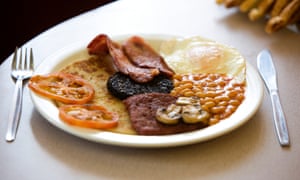
A cooked breakfast with two sausages and two rashers of bacon would constitute 130g.
Photograph: Murdo Macleod/The Guardian
Eating even the moderate amounts of red and processed meat sanctioned by government guidelines increases the likelihood of developing bowel cancer, according to the largest UK study of the risks ever conducted.
The Department of Health and Social Care (DHSC) suggests anyone who eats more than 90g of red or processed meat per day should try to cut down to 70g or less, because of the known link with bowel cancer. The NHS describes90g of red meat as “equivalent to around three thinly cut slices of beef, lamb or pork, where each slice is about the size of half a piece of sliced bread”.
Processed meat includes sausages, bacon and ham. A cooked breakfast with two “typical British” sausages and two rashers of bacon would clock up 130g, the NHS advises.

Yes, bacon really is killing us
A five-year study of half a million men and women who have signed up to the UK Biobank research project found those who were more or less keeping to the guidelines, eating on average 76g of red or processed meat per day, had a 20% increased risk of bowel cancer compared with those who averaged 21g a day.
The risk increased by 20% with each extra slice of ham or rasher of bacon (roughly 25g) the study participants ate, and by 19% with each thick slice of roast beef or the edible part of a lamb cutlet (about 50g).
The study also found heavier drinkers of alcohol had an increased risk – up by 24% among those who drank the most alcohol compared with those who drank the least. Eating fibre in the form of breakfast cereals and bread had a protective effect, however. In January, a study commissioned by the World Health Organization (WHO) reported fibre also protects against heart disease.
Cancer Research UK’s expert in diet and cancer, Prof Tim Key, who co-authored the study and is also deputy director at the University of Oxford’s cancer epidemiology unit, said the research had an extra adjustment to check whether participants had accurately reported what they eat. Diet studies are problematic because those who take part often either forget what they have eaten or fail to tell the truth.
All the Biobank participants were asked about their diet when they joined up. In this study, they were also asked to complete an additional questionnaire every three or four months, detailing exactly what they had eaten in the previous 24 hours.
The researchers found those who ate the most and least red and processed meat tended to exaggerate their consumption or lack thereof. That led to a steeper increase in risk than in studies relied on by the WHO when it produced the guidance incorporated into that of the DHSC.
“We are not claiming that therefore the government recommendation is wrong and should be changed,” Key said. The paper, published in the International Journal of Epidemiology, would have to be seen in the context of many others, he said.
Key also said meat had nutritional benefits. “Meat is important for iron. We would want to consider other aspects of health if we were going to change the recommendation. The main message for the public is that it reinforces the government advice that we shouldn’t eat large amounts of red and processed meat,” he said.
Alcohol, on the other hand, increased bowel cancer risk and did not have nutritional benefits, he said. “Alcohol is an optional thing that we don’t have to consume,” Key added.
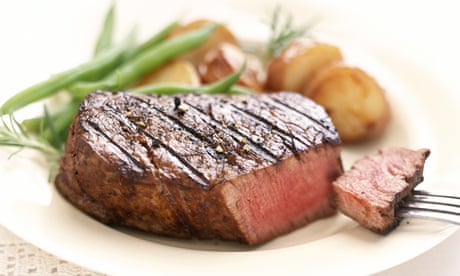
Should we give up eating red meat?
Dr Gunter Kuhnle, an associate professor in nutrition and health at Reading University, said the analysis of the link between meat intake and bowel cancer was very thorough and confirmed previous findings about the risks.
“The results of this study also question the recent focus on nitrite as the main culprit for colorectal cancer: the authors found very small differences between red and processed meat in this study, even though only processed meat contains nitrite,” he said.
“A reduction or removal of nitrite from meat products would therefore have only little impact on cancer risk. An increased consumption of fibre, as shown by this study, would be of considerably more benefit.”
Dr Julie Sharp, Cancer Research UK’s head of health information, said: “The government guidelines on red and processed meat are general health advice and this study is a reminder that the more you can cut down beyond this, the more you can lower your chances of developing bowel cancer.”
Bowel cancer
Medical research
Meat
Cancer
Link: https://www.theguardian.com/society/2019/apr/17/even-moderate-intake-of-red-meat-raises-cancer-risk-study-finds?CMP=share_btn_tw
How to feed 10 billion by mid - century
The Harvard Gazette
How to feed 10 billion by mid - century
Plan on less meat, more plants, and … err … pass the crickets, panelists suggest
The keys to feeding the 10 billion people expected on Earth by mid-century read like a thoughtful laundry list that’s both reassuring and daunting: new technology, more seafood, more efficient small farms, less food waste, less red meat, and — perhaps — insects.
Experts gathered at the Harvard T.H. Chan School of Public Health Friday laid out the extent of the challenge: with just 7.5 billion people today, some 800 million are underfed, 2 billion eat an unhealthy diet that puts them at higher risk for obesity, diabetes, and other metabolic diseases, and many of the rest eat diets dependent upon an inefficient and unsustainable food production system whose reform will be essential in feeding another 2.5 billion mouths.
Though panelists appearing at The Forum at the Harvard T.H. Chan School of Public Health said the necessary changes, while challenging, are achievable, one of the lowest-hanging fruits has the potential to make a large difference.
A large percentage of the food produced today is lost as waste, and a variety of approaches could make that food available for consumption, according to Gina McCarthy, professor of the practice of public health, former administrator of the U.S. Environmental Protection Agency, and head of the Chan School’s Center for Climate, Health and the Global Environment.
“We waste 40 percent of the food between the farm and the table,” McCarthy said. “And then we have to think about how we get people engaged in this. We want them to demand healthy food, but we also want them to have a rich sense of where their food comes from. I want them to be engaged in the food process, and I want them to think about how we eliminate that waste by engaging them.”
McCarthy said locating farms closer to where food is purchased will reduce the amount of food lost before it reaches store shelves. Better refrigeration, already being developed, is another strategy to cutting waste in the distribution system. Awareness among consumers is also key, she said, and simple steps can be taken to reduce food waste in cafeterias — don’t use large serving trays that encourage people to take more than they will eat — and in the home, where she counseled to first “shop your own fridge.”
While fighting food waste is a step that can help anywhere, the current food production system is complex and diverse, and will require a variety of approaches to become more efficient, panelists said.
Technology may provide one answer, according to David Bennell, manager of food, land, and water for the World Business Council for Sustainable Development, a corporate-led organization seeking sustainable business solutions.
The organization, Bennell said, has developed weather forecasting technology — being piloted in the West African nations of Ghana and the Ivory Coast — that can send weather data to the phones of small farmers in the developing world. Armed with that knowledge, farmers can better plan planting and harvesting to boost agricultural yields. In addition to information, though, such small farms will also benefit from fertilizer, according to Professor of Epidemiology and Nutrition Walter Willett.
“Many people around the world carry mobile phones,” Bennell said. “The idea is: Could we create a mechanism through the mobile phone network that would enable these farmers to make better predictions about weather.”
Improving yields on small farms in the developing world would put additional food where it is needed most. Bennell said that the people suffering the largest food insecurity today are, ironically, the world’s farmers — about 2 billion people live on the developing world’s 475 million farms, according to the U.N. Food and Agriculture Organization — and on those farms women and children are most affected. Another technology-centered strategy, Bennell said, is a plan by Microsoft to use drones and artificial intelligence to survey farmers’ fields from the air and provide data on whether they’re too wet, too dry, or showing signs of insect infestation. Getting that information early will allow farmers to address imbalances before they become problems.
Eating habits are going to have to change, according to Willett, who was part of a commission convened by the scientific journal The Lancet that examined how best to feed 10 billion people.
The commission developed a model diet with the goal of being able to provide healthy food in an environmentally sustainable manner.
The diet proposes eating more fish and plant-based foods — fruits, vegetables, nuts, and legumes — than many in the developed world eat today, Willett said. It would also mean eating far less red meat than is common on many tables — the equivalent of just one hamburger a week or a large steak monthly.
One problem with red meat, Willett said, is that the ratio of grain fed to a cow to get a serving of beef is equal to 20 servings if the grain is eaten directly. In a world struggling for enough to eat, that’s inefficient.
“[The cow] is a huge emitter of greenhouse gases, for all the time it’s living and breathing,” Willett said. “Plus, feeding grain to cattle, in particular, is hugely inefficient — roughly a 20:1 conversion of what we feed cattle to convert it to edible food to humans. [It’s] massively inefficient.”
The “new” diet, Willett said, is actually not that different from the traditional Mediterranean diet as it existed before the advent of modern agricultural practices. Meat was eaten, but sparingly, and rarely as the centerpiece of the meal.
That diet, Willet said, would not just feed a lot of people, but it would also improve health globally, eliminating between 20 percent and a quarter of 11 million diet-related premature deaths annually.
“The good news is it is possible to feed them a sustainable and healthy diet,” Willett said, “but it will require a big change in what we’re doing.”
In response to a question from the audience, Willett said some cultures have long eaten insects and, though dietary studies including insects are rare, researchers should explore whether they deserve a larger role in the future .
RELATED
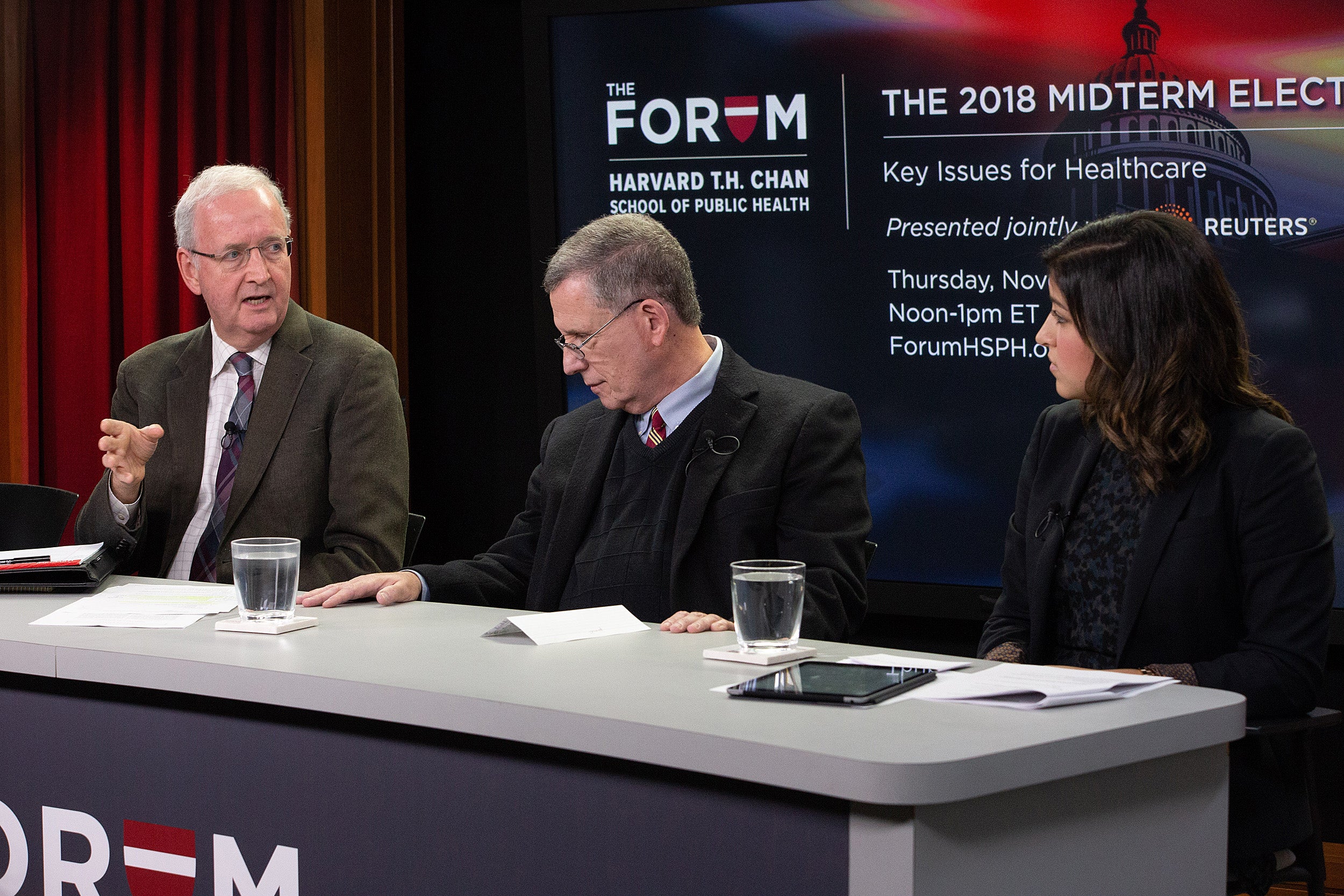
States hold the power on health care, experts say
Vote could set in motion Medicaid expansion
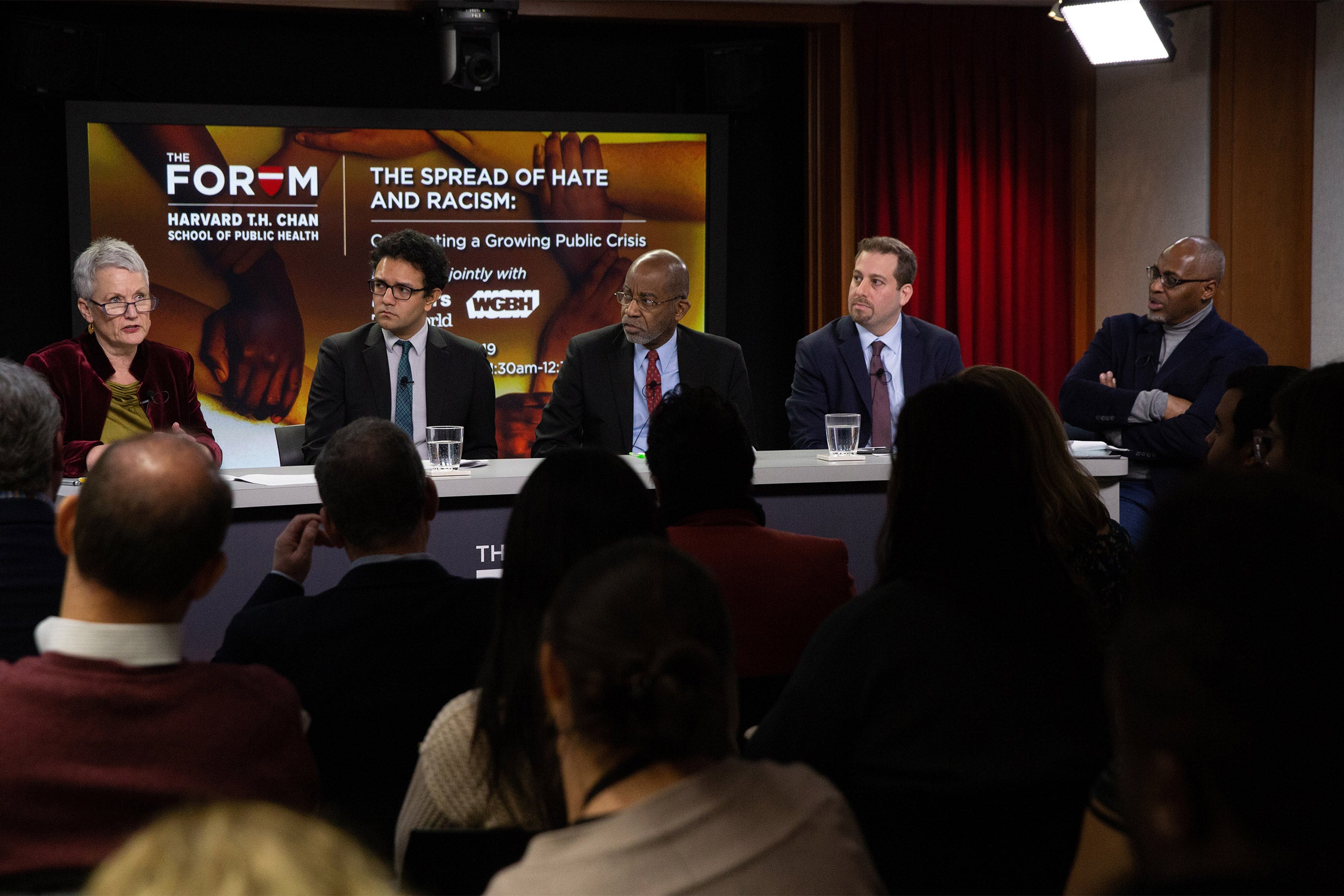
The endless struggle over racism
Forum examines rising tide of hate, while promoting approaches that encourage tolerance
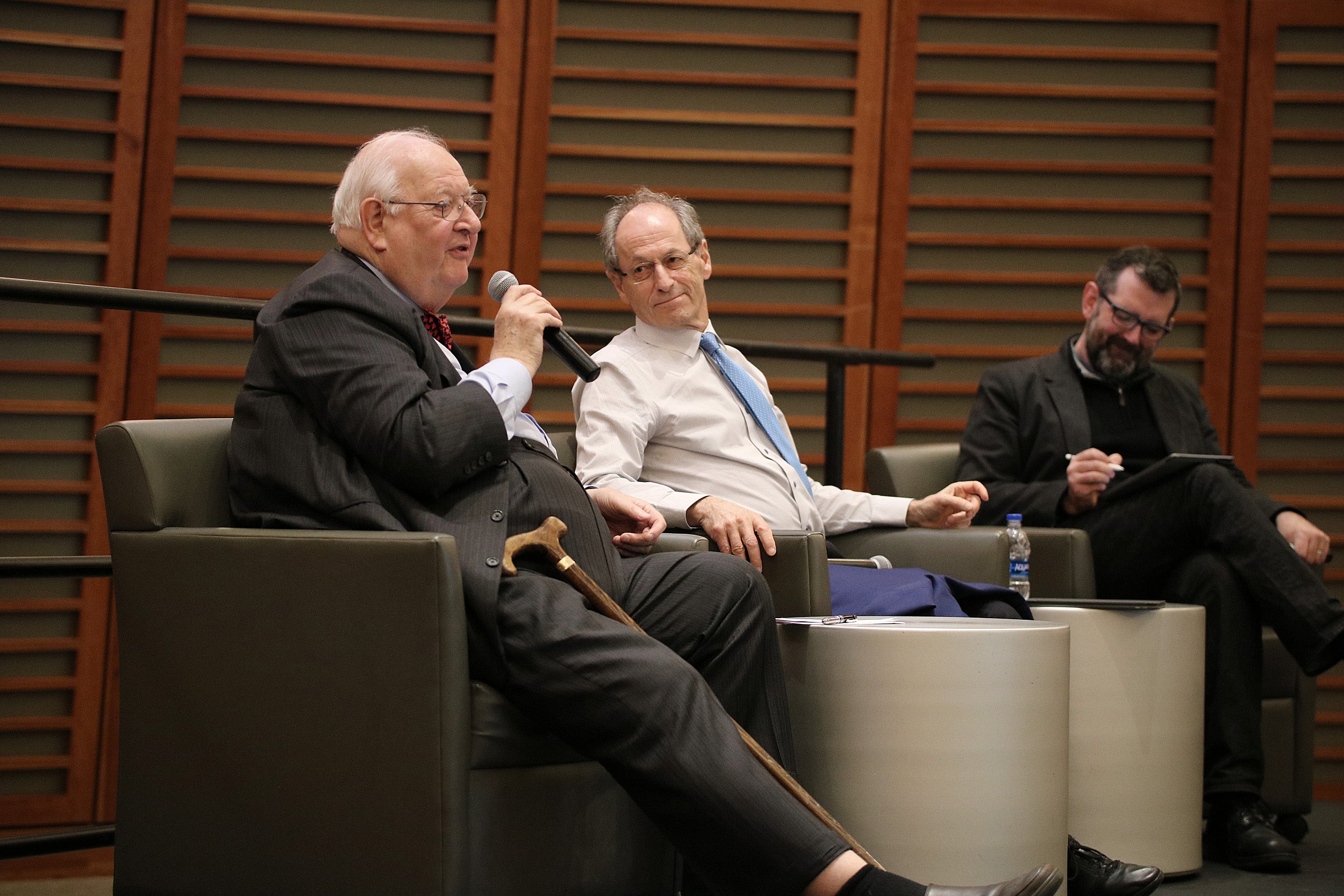
Urging a response to ‘deaths of despair’
Nobel Prize-winning economist Angus Deaton among speakers at Harvard Chan School forum
Ana Sortun, chef and owner of the Cambridge, Mass., restaurant Oleana and also a panelist, said that a healthful, plant-based diet can be not just sustainable, but also tasty. Cooks, Sortun said, can avoid the “cheap tricks” common in modern processed foods — boosting flavor with fat, salt, and sugar — and still turn out flavorful meals. One key, she said, is to emphasize locally sourced foods, because the fresher the ingredients, the better the flavor.
“There isn’t enough access to really fresh food,” Sortun said. “From a chef’s standpoint, fresh equals flavor.”
Sortun told of a recent trip around the Mediterranean and her exposure to an array of new flavors in Turkey, created not through those fat-salt-sugar tricks, but through careful cooking with chosen spices.
Several panelists pointed to the U.S. Farm Bill as a potential political tool to encourage change in the U.S. industrial agriculture model, which relies heavily on pesticides and fertilizers, the runoff from which chokes waterways. The bill’s incentives, which could be altered, now encourage centralization of agriculture to the detriment of surviving small and medium-sized farms, Willett said. Changing the farm bill, however, would be difficult since the food and agriculture industry is a powerful lobby.
Despite the challenges ahead, McCarthy said that people can be educated and support change with the choices they make every day, reducing waste and building an agricultural system that doesn’t harm the environment.
“I have no doubt we can do it. The question is how to engage enough people … to ensure this is what we deliver to the world,” McCarthy said.
Link: https://news.harvard.edu/gazette/story/2019/03/experts-gather-at-harvard-to-discuss-future-food-solutions/
Subscribe to:
Comments (Atom)
